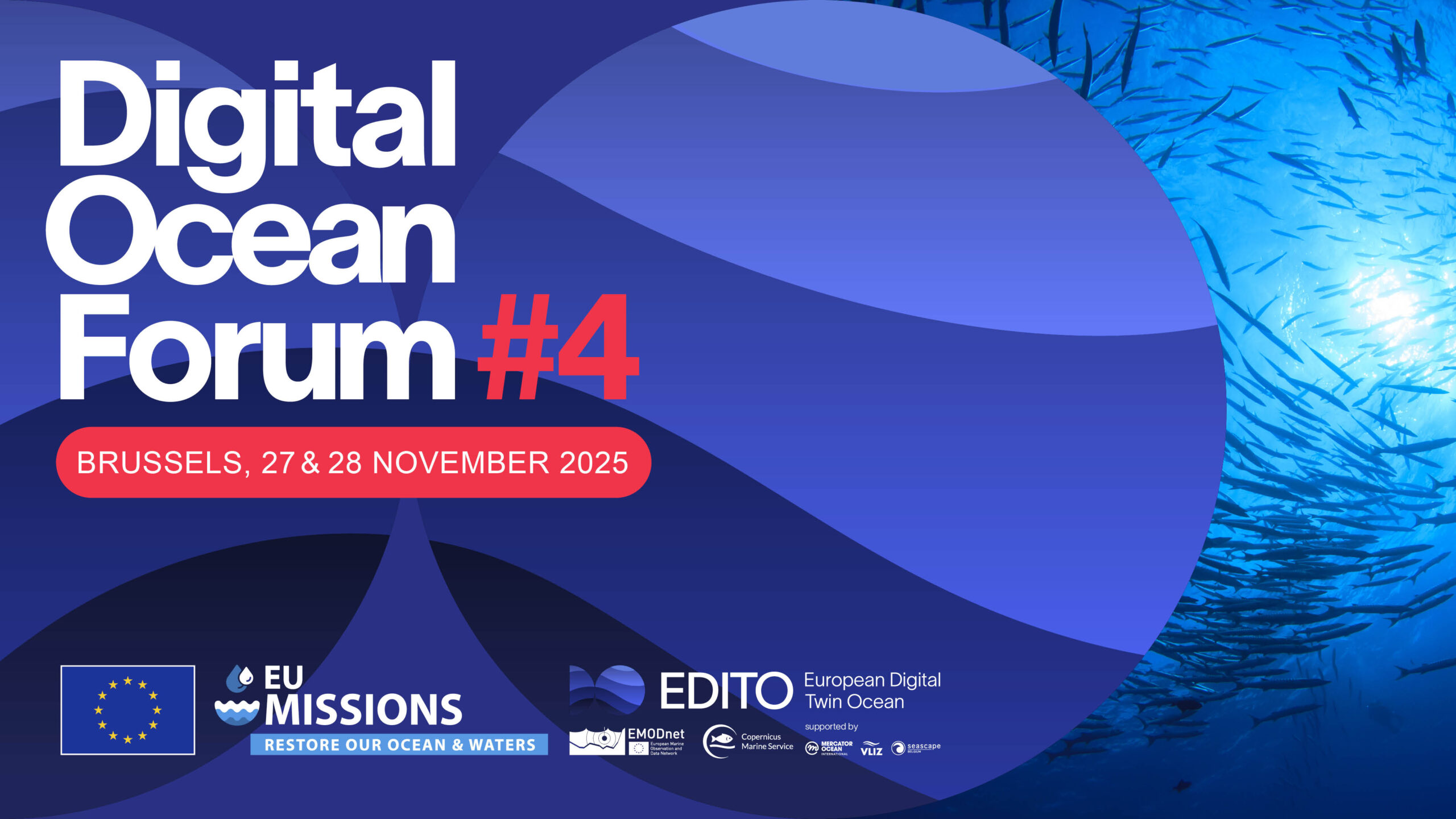
- This event has passed.
Digital Ocean Forum 2025

The fourth edition of the Digital Ocean Forum took place on 27-28 November in Brussels (Belgium). At this landmark event, ocean scientists, modellers, researchers, innovators and policymakers came together once again to take stock of recent developments and explore new opportunities towards the co-construction of the European Digital Twin Ocean.
Attendees were invited to learn the latest about EDITO: the public infrastructure of the European Digital Twin Ocean, powered by EMODnet and Copernicus Marine Service. The event featured demonstrations and deeper dives into what the EDITO platform offers for scientists, developers, policymakers, and ocean citizens across Europe. From providing rapid ocean insights to modelling “what-if” scenarios and supporting science-based decision making, attendees were invited to discover the power of EDITO.
The full report will be available in early 2026. Watch the replays of the event below, and explore photos, presentations and more here.
